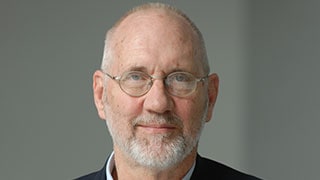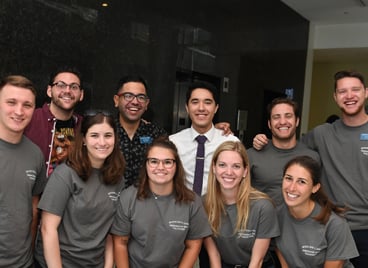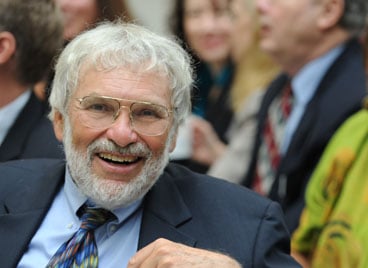
A Demographic and Legal Profile of January 6 Prosecutions
Wednesday, July 26, 2023
 The government has won all but 12 cases brought to date (five died, four fled, one
acquitted, two dismissed);
The government has won all but 12 cases brought to date (five died, four fled, one
acquitted, two dismissed);
517 of 716 (72%) were charged as the result of tipsters and informants;
Florida, Pennsylvania, Texas, New York, and California are home to 43.9% of those charged;
Only states not represented among the 716 arrested were North Dakota, Nebraska and Vermont;
35.1% of defendants were identified as going to the Capitol alone;
25% were armed;
18.5 % had a background in law enforcement or the military;
Largest employment group identified is the Business Owner group, which accounts for 24.7%;
Only 35 of the 716 individuals were identified as unemployed;
22.2% had a criminal record.
Newark, NJ, July 20th-- The Center for Policy & Research at Seton Hall University has released a report, "The January 6 Insurrectionists: Who They Are and What They Did," and accompanying interactive PowerBI dataset, which presents demographic data and provides a detailed examination of the disposition and charges brought against the 716 persons prosecuted in the first year after the storming of the Capitol.
Of the 716 persons charged within the first year by the Department of Justice, 391 were charged with felonies (primarily forms of conspiracy, obstruction and/or violence) and 325 were charged with misdemeanors (primarily forms of trespass).
Conspiracies were the most serious offenses, with two different forms of conspiracies: seditious conspiracy and conspiracy to obstruct the certification of an election. The conspirators were largely populated by two major groups— the Oath Keepers and the Proud Boys. The Oath Keepers were virtually exclusively Conspirators, either seditious or conspiracy to obstruct, while virtually all other conspirators were members of the Proud Boys or Three Percenters.
"Within days of January 6 the Department of Justice empaneled grand juries and indicted multiple insurrectionists for conspiracies to obstruct the transfer of power," said Professor Mark Denbeaux, director of the Center for Policy & Research and a co-author of the report. "I have been practicing and teaching law for more than 50 years and the Center's reports have detailed government legal and extralegal action – and inaction – for nearly 20 years and I have never seen the DOJ move this quickly or this effectively." He continued, "In order to proceed so expeditiously the FBI had, necessarily, accumulated sufficient/considerable evidence of the Oath Keepers and Proud Boys' conspiracies before January 6. So the question is: Why did the FBI do nothing with its evidence to overthrow the election until after the January 6 insurrection failed?"
Guilty, Overwhelmingly
 As of June 12, 2023, of the 716 defendants profiled by the Center for Policy and Research,
only one has been fully acquitted with two cases dismissed voluntarily by the prosecution.
In fact, more defendants have died (5) or fled (4) since January 6 than have prevailed
in court (3). To date, 529 defendants of those charged in the first year have been
found or pled guilty, with 175 remaining on the court docket, with pleas and trial
dates approaching. Put another way, if one removes the deceased and the fugitives
from the calculation, as of June 12 the Department of Justice has won 529 of 532 cases
it has charged – an astounding 99.4 percent conviction rate. The conviction rate for
felons with conspiracy charges – including, notably, members of the Proud Boys, Oath
Keepers and 3 Percenters – rises to 100 percent, with significant prison sentences
imposed.
As of June 12, 2023, of the 716 defendants profiled by the Center for Policy and Research,
only one has been fully acquitted with two cases dismissed voluntarily by the prosecution.
In fact, more defendants have died (5) or fled (4) since January 6 than have prevailed
in court (3). To date, 529 defendants of those charged in the first year have been
found or pled guilty, with 175 remaining on the court docket, with pleas and trial
dates approaching. Put another way, if one removes the deceased and the fugitives
from the calculation, as of June 12 the Department of Justice has won 529 of 532 cases
it has charged – an astounding 99.4 percent conviction rate. The conviction rate for
felons with conspiracy charges – including, notably, members of the Proud Boys, Oath
Keepers and 3 Percenters – rises to 100 percent, with significant prison sentences
imposed.
Tipsters
Although a number of different methods and technologies were used by the Department of Justice to identify alleged assailants from January 6 (including "geofencing" using cell phone location data), notably, 517 Of 716 insurrectionists (72.2%) were arrested because of informants or tips according to the Statement of Facts provided for each case by the FBI. Further, although the FBI often did not identify who the tipster was in these case documents, we do know that among those who turned in others were 40 co-workers, 39 family members, 31 friends, 30 classmates, and 17 other insurrectionists.
DEMOGRAPHICS
Race
Those charged were overwhelmingly white (659 of 716, 92%) but also included Hispanics (39, 5.4%), Blacks (10, 1.4%), Asians (7.1%, 5 of the 7 were of Vietnamese ancestry) and one Native American.
Gender, Age
Men comprised 81.3% (625 of 716) of the charged rioters and women 12.7% (91 of 716). One third of the women were charged as felons, compared with more than half of the men. Almost two-thirds of the women are misdemeanants, compared to 40% of the men. Almost one third of the women charged were in their 50s, 31.9% (29 of 91), followed by 27.5% (25 of 91) in their 30s, and 18.7% (17 of 91) in their 40s. In contrast, the age distribution for men was much more even with 28.2% (176 of 625) in their 30s, 23.8% (149 of 625) between 18 and 29, and 21.8% (136 of 625) in their 40s.
"With the exception of race and gender, in many ways, the 716 charged for their actions on January 6 mirror America," said Donna Crawley, Professor Emeritus at Ramapo College and consulting statistician to the report. "For example, based on the information that was available, the 716 were not statistically different in educational attainment from the American white adult population as a whole. In addition, they don’t look radically different from the rest of the country in general occupational categories."
Home
The 716 who were charged in Washington, DC on January 6th, traveled from all over the nation. The top states of origin were Florida, Pennsylvania, Texas, New York, and California, which accounted for 43.9 percent of those arrested. Of all insurrectionists charged, 11.5% (82 of 716) traveled from Florida, 8.9% (64 of 716) from Pennsylvania, 8.8% (63 of 716) from Texas, 7.4% (53 of 716) from New York, and 7.3% (52 of 716) from California. The only states not represented among the 716 arrested were North Dakota, Nebraska and Vermont.
Alone
In total 35.1% (251 of 716) of defendants were identified as going to the Capitol alone. While those who came with families amounted to 20% of all defendants. This implies 44.9% of defendants came with a friend or an unrelated acquaintance. Of 251 defendants confirmed to have gone alone, 23.5% (59 of 716) of them had a prior criminal record. Of these 251 "loners," 141 were charged as felons and 110 as misdemeanants.
Education
While education has not been confirmed for all 716 individuals, what has been identified is generally consistent with educational attainment of the United States population, as indicated in the US Census data. Of the 224 insurrectionists for whom education level was available, 82 had college degrees, 52 had "some" college, 68 had high school diplomas, and 20 had completed some post-graduate education.
Education
Employment data was verified for 60.1% (430 of 716) of the insurrectionists, with 39.9% (286 of 716) of the insurrectionists missing employment data. The largest employment group identified is the Business Owner group, which accounts for 24.7% (106 of 430) of the insurrectionists and includes active, retired and former business owners. The second largest group is Blue Collar or Working- Class group, which makes up 17.2% (74 of 430) of the insurrectionists. The White-Collar group accounts for 8.8% (38 of 430) and is the third largest group. Additionally, 3.7% (16 of 430) worked in healthcare; 2.6% (11 of 430) were coaches or teachers; and 2.1% (9 of 430) worked in real estate. Only 35 of the 716 individuals were identified as unemployed. Twelve are retired or collecting disability benefits, and eight are former military or police. Six individuals were homemakers, four fathers, and two mothers.
Law Enforcement and Military Involvement in the Insurrection
Another notable finding from the report include that 18.5 percent of the 716 insurrectionists had a background in law enforcement or the military: 28 had a background in law enforcement while 105 had a military background. Among the felons, including the conspirators, there were 105 military members or veterans. Of the 105, 68 were charged as felons—21 charged with conspiracy. Of the 105 military-affiliated insurrectionists, 31 (or 29.5%) were part of groups, with 13 Proud Boys, 12 Oath Keepers, and six Three Percenters.
There were also 28 members or former members of law enforcement, of which 17 were charged with felonies —4 charged with conspiracy. Although 15 of these law enforcement insurrectionists were captured through tips, none were tips by family members.
Criminal Background
Of all defendants, 22.2% (159 of 716) had a criminal record before January 6th. The definition used in the report for "having a criminal record" largely comports with the FBI’s standard that anyone arrested on a felony charge (regardless of disposition) or with a misdemeanor record, arrest, or prosecution unexpended on the federal level has a criminal record. Of those arrested for misdemeanors in connection with January 6th, 17.27% (57 of 330) had prior criminal records. Of those arrested for felonies 26.17% (101 of 386) had a prior criminal record.
Financial Hardships
Out of the 716 individuals who participated in the January 6th riot, 140 were facing serious financial hardships such as Bankruptcies, Judgments/Liens, and Foreclosures/Evictions. Further, the level of violence among the “Financial Hardship” group is also significant. Of the 140, 59 of them allegedly engaged in violence (or 42.14%). The greatest number were Judgment or Lien defendants. Of the 70 bankrupt defendants, 27 (or 38.57%) engaged in violence. Of the 111 defendants with prior Foreclosures/Evictions, 43 (38.73%) engaged in violence. This leaves the defendants with prior Judgments or Liens: of the 117 that fit that criteria, 50 of them (42.7%) allegedly engaged in violence.
"The evidence we gathered and compiled can serve as a searchable database for those who wish to do further studies," said Antonio DiMeglio, a Seton Hall Law student and current Fellow at the Center for Policy and Research. "For example, approximately 25% of those arrested were armed. This data provides a factual basis and helps to build and accurate portrayal of the January 6 insurrectionists."
Methodology
This report is based on data sourced from legal filings, including statements of fact issued by the FBI, criminal complaints, arrest warrants, indictments, and ancillary documents such as depositions and court transcripts. In some instances, the social media accounts or testimony of the defendants was considered along with information from reputable national news outlets and local newspapers of the defendants' hometowns.
The Center for Policy and Research recorded 67 variables, including demographic information such as gender, age, and race; details of the criminal charges filed; far-right group affiliation; employment; whether the individual brought a weapon or wore tactical gear; whether the individual came alone or with family members; etc. Quantitative analyses for the report were done in coordination with an outside statistical consultant. Legal filings, such as FBI statements of facts, are neither systematic nor complete and do not necessarily include the broadest scale and detail of information. For example, affiliation with a group is not identified for every individual within publicly available materials and may be somewhat incomplete.





